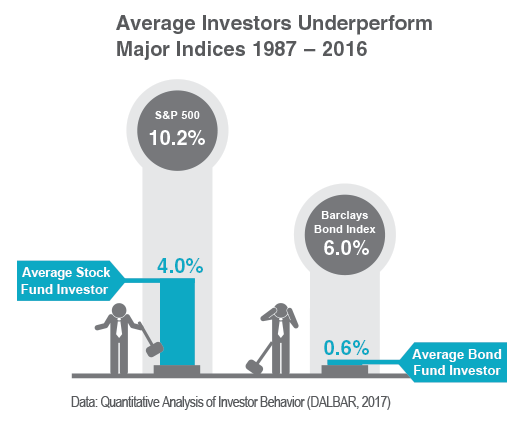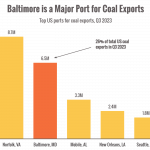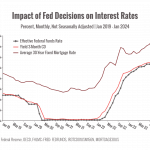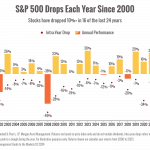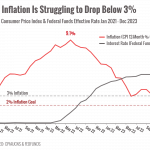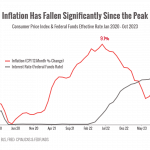Investors are Still Their Own Worst Enemy
Our core belief is that the dominant factor in long-term, real-life financial outcomes is not investment performance, it is investor behavior. Therefore, our true value as a trusted advisor lies in establishing and guiding our clients’ investor behavior, not in managing investment performance.
This philosophy of advice is data driven as many academic and industry studies demonstrate a perennial pattern that investors on average fail to capture the returns that their own investments offer, largely because of behavior.
In the recently released DALBAR study for the 30-year period ending December 30, 2016, the S&P 500 stock index produced an excellent annual return of 10.2%, while the average stock fund investor earned only 4.0%, a gap of 6.2%. Bond investors did not fare any better. During the same 30-year period, the Barclays Bond Index yielded an annual return of 6.0%, while the average bond fund investor earned just 0.6%. Note these three decades include the crash of 1987, the tech boom-bust of 2000, the Great Recession crash of 2008, and the current bull market run — in other words a very fair sampling of good and bad times.
These results, illustrated above, reflect the fact that we experience powerful emotions when markets move up and down that cause us to make investment decisions that are not in our best interests (e.g., panic selling, euphoric buying, performance chasing, etc.). This is a profound observation of the “behavior gap” that exists between investment and investor returns. Investors are more often than not their own worst enemy when it comes to investing.
When we welcome new client families to our firm, we hand them a card. The front consists of a bear market chart designed to prepare them for the fact that the market pulls back on average about every five years or so and not to panic. The back of the card is a summary of What We Do / How We Earn our Fee:
- 20% — Quantifying goals, crafting a long-term plan, funding the plan with a long-term portfolio
- 80% — Coaching clients to continue working the plan through all the cycles of the economy, and all the fads and fears of the market
- 0% — Analyzing/interpreting the economy and current events
- 0% — Timing the market, calling tops and bottoms
- 0% — Identify consistently top-performing investments


